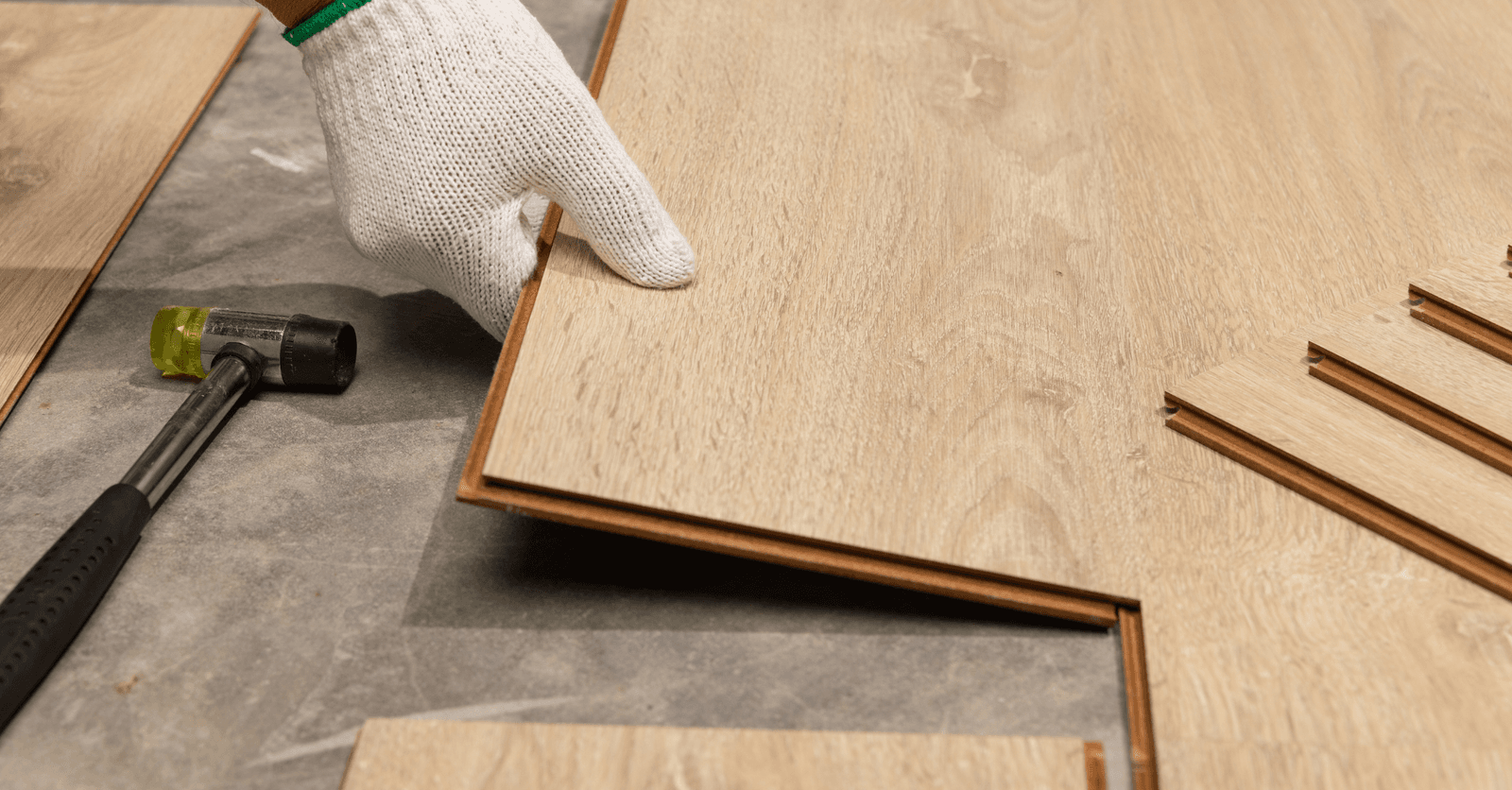
The sheer size of a home's plumbing system can make plumbing issues seem rather complex. There are pipes in the basement, drains outside, bits of pipe coming out on the roof, valves, and J-bends under the sinks...
So, how does one tackle the mysterious smell of rot, a slow-draining sink, an empty toilet tank, or gurgling monster pipes? Well, there's no need to get poetic about it; a damaged, improperly installed, or clogged plumbing vent could account for all of the above.
What Is a Plumbing Vent?
Also known as an air admittance valve (AAV) or drain-waste-vent system (DWV), a plumbing vent is an integral part of the drainage system that disposes of household wastewater. Specifically, it's the portion of the system that vents the pipes to ensure that the sewer fumes stay, well…in the sewer.
Plumbing vents ensure that there's proper water flow without so much as creating a void in the P-trap (the U-shaped part of the pipe under your sink). When the P-trap lacks a minimum amount of water, noxious odours and fumes, including methane, are released.
The Workings of a Plumbing Vent
Basically, a plumbing vent levels out the pressure in the pipes, forcing air behind the draining water, thus preventing gases from entering the home and keeping the pipes in good condition.
Normally, the drain pipes are routed through the walls, towards an exterior-leading vertical ventilation system. However, in some cases, this simple configuration is more difficult to achieve. Consider, for example, a sink embedded in a kitchen island. In such cases, small, automatic discharge vents come into play, and these are commonly found in hardware stores and only to be used as a last resort. They're affixed directly to the drain pipe, opened while the air pressurizes the water, and closed when the flow stops, keeping the trap water-filled.

Source: Flickr
Problems Related to a Faulty Vent
Numerous issues can arise if:
the vent is positioned incorrectly;
the model installed is too small;
the exterior cap isn’t sealed properly; and
something is obstructing the vent (branches, leaves, nests, ice).
Keep an eye out for the early warning signs of the aforementioned problems before they cause serious damage and further clog your pipes.
If you notice moisture build-up on your ceilings, check your vents before becoming overwhelmed by repair costs associated with a potentially cracked roof.
If a foul smell is overpowering your home, your plumbing vents may be clogged.
If you notice that the water is draining slowly after bathing or washing dishes, it could be something more than hair or food scraps clogging the drain. If using drain cleaners is of no avail to clear the clogged drain, consider inspecting your vents.
If abnormal, gurgle-like or muffled noises emanate from your pipes as water flows through, poor airflow might be to blame.
If your toilet tank doesn’t fill up properly after flushing, a lack of air pressure caused by clogged vents is likely affecting the water level in the P-trap.
Plumbing vents are designed in such a way that they should be easily accessible for maintenance and inspection purposes. The latter ensures that any problem can be identified and fixed promptly. When in doubt, hire a plumber.
How to Unclog a Plumbing Vent
Carry out a visual inspection of the vent: Check for debris possibly clogging the vent. Sometimes, leaves, birds’ nests, or other items can lodge in the vent, subsequently clogging it.
Use a garden hose: Insert a garden hose into the vent and turn on the water. Water can help push the obstruction out of the pipe. Proceed carefully because if you’re dealing with a significant clog, the water might backflow.
Use a drain auger or snake: If water doesn’t suffice to unclog the vent, use a drain snake. Insert the snake into the vent and channel it through until you feel it rest against the obstruction. Turn and push the snake to break the obstruction apart, pulling it out.
Check all other openings: Make sure all other plumbing system openings aren’t clogged. At times, it may be clogged from more than one point.
How to Clean a Plumbing Vent
To ensure the proper functioning of your plumbing system and prevent clogging, schedule a yearly vent cleaning. Your vent cleaning routine must include removing all visible debris and inspecting the general state of the vent to ensure its structural integrity. In between cleanings, regularly rinsing the inside of the vent using a garden hose can be beneficial. Doing so will eliminate minor build-ups and preserve the system’s overall state. For a more thorough cleaning, using a vinegar and hot water solution can prove to be effective in dissolving residue and grease build-ups. Simply pour the solution down the roof-mounted vent and allow it to sit for a few hours. A qualified plumber can also inspect and clean your system using professional tools.
Automatic Drain Vent: Cost and Installation
One can find the necessary tools and devices in most hardware stores like Canac, Canadian Tire, Rona, and Réno-Dépôt. Prices vary depending on size and use. A one- to two-inch ABS automatic drain vent meant to fit under a sink, if a conventional vent can't be used, costs between $4 and $20. On the other hand, an outdoor steel wall vent with a cap and gasket can run between $30 and $60.
How to Install Plumbing Vents on Your House
Hire an expert to install an exterior or a roof-mounted vent. Assuming that you need to change the vent below a sink or one accessible during renovations, here’s a run-down of all the materials and tools needed and the steps to follow.
Tools:
Vent
Bucket to collect water
Pipe cutter or hacksaw, depending on the plumbing system’s materials
Channel-lock pliers
Tape measure
Glue and seal tape (silicon or Teflon)
PVC primer
Fittings, traps, valves, and pipes to complete the work depending on the extent of the project
First off, place a bucket under the sink to avoid creating a mess. Then, unscrew the nuts and bolts holding the drain trap in place, and remove the J-bend.
Get a hold of a sanitary tee and pipes. Depending on the configuration of your installation, you may have to trim the pipe a bit. Note that the bottom part of the vent should be about four inches from the top of the P-trap (maximum 30 inches), so measure your pipe extension accordingly.
Connect all components without glueing them in place. Make sure everything fits as it should, and if necessary, make any adjustments. When everything looks as it should, use a marker to label where everything lines up (pipes with fittings).
Take the pieces apart, apply glue, and then hook up the parts before linking the whole thing to the existing plumbing under the sink.
Install the vent at the top of the vertical pipe as per the manufacturer's instructions and apply seal tape before screwing the nuts and bolts in place.
Next, secure the P-trap by sliding the J-bend onto the drain fitting and inserting the pipe arm into the T-shaped fitting. Screw on all the nuts.
Lastly, test it out by filling up the sink with water and removing the stopper to spot any wastewater leaks.

Source: Drawing made with Paint
How Are Pipe Vents Regulated as Per the Plumbing Code?
In Quebec, similarly to several other regions, the plumbing code, which includes pipe vent standards, is strictly regulated to ensure the safety, efficiency, and well-being of building occupants. The aforementioned standards are established and updated by Quebec’s Building Code, which includes, by reference, the National Plumbing Code of Canada. Below are a few key points regarding pipe vent standards for Quebec.
Where to install a pipe vent?
Installing pipe vents correctly is crucial for ensuring the drain system is properly ventilated. Therefore, they must be installed near sanitary installations, such as sinks, toilets, and bathtubs. In general, the main vent must be positioned no further than 6.5 to 9 feet from the unit, as per one’s local Building Code. This proximity guarantees gases and odours are effectively channeled outside, without compromising the proper workings of the drainage system.
Vents must sit above the rooftop to release the gas far enough away from neighbouring windows, doors, and other openings leading into the house. The specific requirements may vary, but most often, a vent must be capped off 12 inches above the rooftop. Moreover, maintaining a proper distance between ventilation points and openings like windows, doors, and air outlets is paramount.
By following these guidelines when installing your pipe vents, you can not only improve your drainage system’s functionality but also maintain safer—and odourless—indoor air quality.
What Is the Standard Sizing for Pipe Vents?
The diameter of a drainpipe vent depends on several factors, including the number of installations they supply. Here are some general guidelines:
Standard size: 1 ¼ to 2 inches (about 32 to 50 mm). The vent’s diameter must be big enough to ensure proper ventilation and prevent condensation from freezing during wintertime.
Installation-based calculations: For systems supplying several installations, it may be best to opt for a main vent with a wider diameter.
Local code compliance: Consult a professional plumber to understand the exact specifications your installation requires.
How to Guarantee Vent Durability and Resistance
Vents must be designed and installed specifically to prevent rainwater from filtering in, and freezing over during wintertime, which could obstruct the pipe. Solutions such as vent caps may be required. Note that the pipe's material must withstand corrosion and deterioration.
Looking for something else?
Related articles
The latest industry news, interviews, technologies, and resources.

Editorial Team
•07 Aug 2025
The demand for reliable and skilled roofers in Quebec City remains strong heading into 2025. With aging residential infrastructure, seasonal extremes, and increasing awareness of energy efficiency, property owners continue to seek expert roofing services. Whether you’re a self-employed roofer in Quebec or run a growing team, now is the time to position your business for expansion. Here’s how to find new contracts, attract clients, and build a sustainable roofing business in Quebec City.

Editorial Team
•07 Nov 2023
For both humans and the home, winter is difficult to endure. Between the cold weather, the strong winds, the ice, and the snow, we all require a little bit of cold weather protection.

Editorial Team
•05 Sep 2024
In most rooms, flooring is subject to a lot of wear and tear from constant foot traffic, shifting furniture, falling objects, etc., making it a key surface to consider when designing the floor plan of any room.
Editorial Team
•16 Jun 2025
Wood floors have an undeniable charm that can, without a doubt, highlight any decor. To showcase their entire potential, sometimes after years of wear, restoring them is the only route ahead. So, how can you conceal scratches and deep gouges and years' worth of foot traffic? Well, sanding your hardwood floors will restore their former gleaming finish.

Léa Plourde-Archer
•04 Oct 2024
Ceramic is a highly-resistant and versatile material that is known for being both practical and aesthetically pleasing. Adapted to all tastes, it is sold in the form of tiles that are offered in a wide variety of colours, shapes and textures. There is something for every budget, as prices vary, among other things, depending on the quality of the material and shape of the tiles.